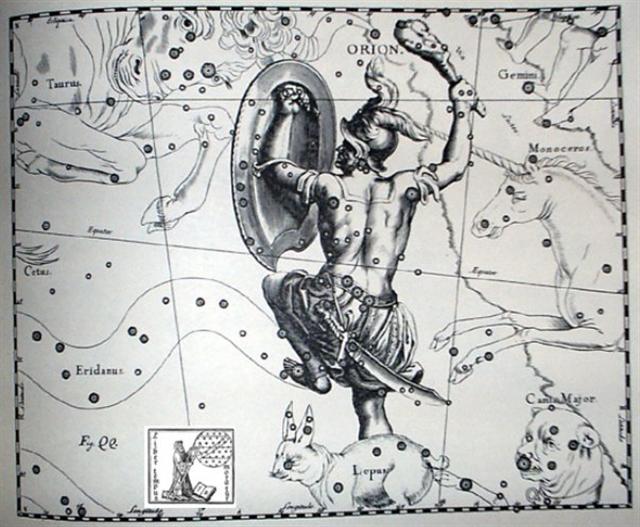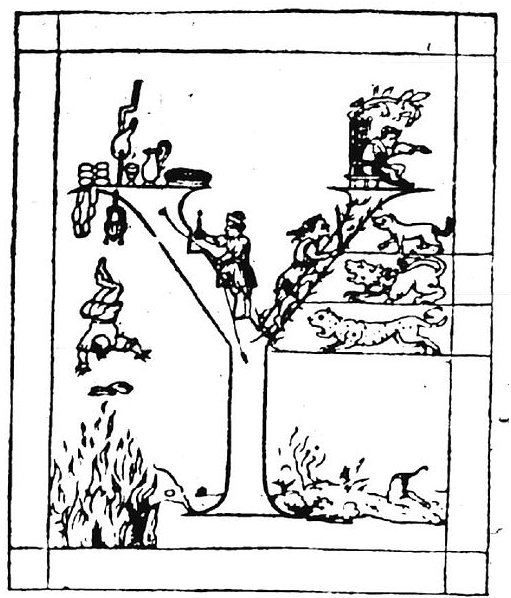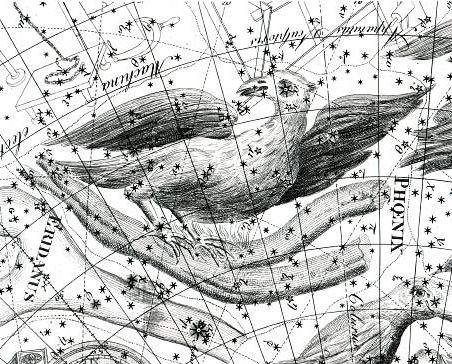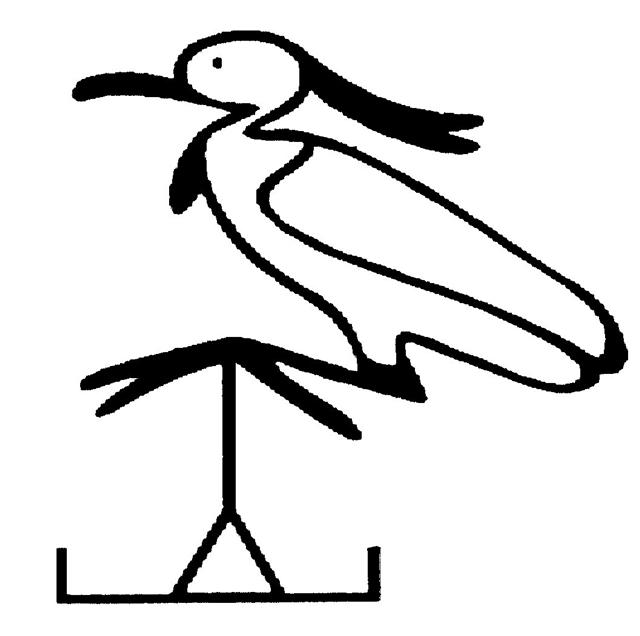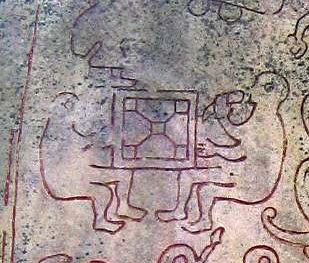11. After turning the K tablet 180º around to see the glyphs in line a2 standing on their feet we once again will encounter the atariki figure:
There are 8 days (glyphs) from atariki in *Ka1-18 to atariki in Ka2-3, but 9 steps if we count also the vacant place immediately after *Ka1-18. I am convinced atariki in *Ka1-18 represents Rigel and not any of the Lepus stars. Atariki is a male figure, a king, and not a representative of the Moon. Consequently I should adjust my position for Saiph (κ Orionis) in order to have the proper Orion star at atariki in Ka2-3:
Saiph (the 'sword') marks Orion's right knee, and we can see the resemblance with Ophiuchus who also is climbing into the past. But the Club tells us Orion should be an alias for Hercules. In picture language the one who is turned to the left and looking as if climbing should mean 'not climbing (ahead)'. It was a long time since Orion was at spring equinox and could be said to rise together with Sun. To my mind comes the Pythagoras letter where climing to the left is the easy way of old people. When living on memories you don't need any teeth (therefore no animals at left):
Atariki at Saiph (κ) is drawn as a complete figure in contrast to atariki at Rigel. Only the beginning of Orion can be seen when Rigel is rising. The atariki figure should mean the Orion constellation. But Betelgeuze does not belong, it comes later:
To make sense of the atariki picture we must imagine Rigel as the head (and possibly a pair of lesser stars on either side corresponding to the pair of mata signs). South of the equator Orion is not blinded by the helmet at Heka (λ), but instead Rigel seems to be his magnificent head. The strange body probably is, I think, due to an arrangement representing a henua cross:
The central Belt of Orion is the 'heart' of the constellation and from there 'fire' is generated, similar to how at the top of a pyramid there is a Phoenix bird.
The pyramid represents the earth with its 4 corners and the apex of the pyramid is the position of the Sun King, the ruler of the land. ... In ancient Egypt there was also a special type of bird to indicate this, the benu bird (named phoenix by the Greeks). According to Wilkinson the benu bird was a heron (Ardea cinerea - cǐnis = ashes) and '... standing for itself on an isolated rock or on a little island in the middle of the water the heron was an appropriate image for how the first life appeared on the primary hill which arose from the watery chaos at the time of the original creation.'
'Similarly to the sun the heron rose up from the primary waters, and its Egyptian name, benu, was probably derived from the word weben, to 'rise' or 'shine'. This magnificent wader was also associated with the inundations of the Nile.' ... (See at Aquarius.) At Orion Revisited I presented several arguments, e.g.: ... When the rains arrive it is no longer necessary to help the 4 gods in the corners to lift up the cloud blanket which covers the earth - the implication being there is now a distance between the clouds and the earth. Rain indicates there must be a distance between the earth and the clouds. The Raingod has arrived and he is Sun, he has been born anew. The square of Orion is like a dark cloth of night covering earth, like when Uranus covered Earth. In the morning this cloth is lifted up and a new little Sun is revealed. A little thought reveals he is probably responsible, he has with his hot rays dried up the wet earth. The resulting mist is lifting upwards. It can therefore later be returned in the form of rain. Instead of a single white spot (Moon) the whole earth is now bathing in the golden rays from Sun. The board of tafl, as illustrated (turned vertical in order to show the layout) on the Ockelbo Runestone in Sweden, has 4 squares connected with a central 5th - it is a variant of the 'quincunx' emblem:
|




